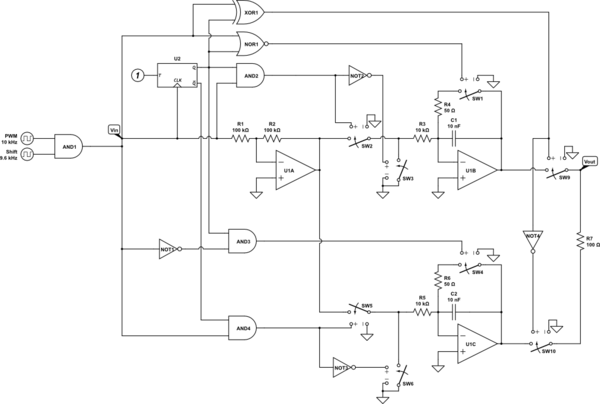Is this at all a standard approach to DAC design? If so, what's it
called?
It does not seem to be a standard approach. I only found a few examples of 'proposed' circuits that use a similar technique, including this one which describes itself as a 'synchronous PWM-DAC filter' (beware: not tested!):-

If implemented correctly, what advantages and disadvantages are there
to this approach when compared to simple RC other than complexity?
The obvious advantages are much faster settling time without the need for a complex filter, and probably much shorter delay.
Disadvantages include (as you mentioned) possible mismatch between the two halves, greater chance of introducing distortion and glitches, and an inability to handle close to 0% and 100% PWM. Another limitation is that output voltage is proportional to PWM 'on' time - not the ratio of 'off' to 'on' - so it will not adjust itself to the PWM period.
For the switches, would single MOSFET pass-gates suffice?
Yes, provided they can be biased properly and reverse voltage drop is low when 'open'. I think this is doable for all but the output switches (for which a 'bidirectional' analog switch such as the CD4053 might be needed).
How can this be simplified?
I used a slightly different approach with a switched current source alternately charging two 'ramp' capacitors, which are then alternately connected to a single sample-and-hold capacitor. By making the s&h capacitor small compared to the ramp capacitors I was able to eliminate buffer amps between them, and the single current source means balance is assured if the ramp capacitors have equal values. The four PWM phases are arranged so that the processes of charge, hold, and discharge are separated enough to avoid interaction - at least for PWM ratios not too close to 0% and 100%.
Here's the LTspice simulation (the current source and switches are 'ideal' simply because I couldn't be bothered putting in 'real' components):-

I used two inverters to partially account for delay in the flip-flop. This reduced glitching in the gate outputs.
Here are the waveforms (ignore the added voltages, they are just to separate the traces):-

Note that I only made this circuit to explore the concept. I don't recommend using it in a practical application because there are better solutions.
How best to reduce the glitches?
Arrange digital timing delays so the gate outputs don't glitch. Make sure that there is sufficient time between processes (eg. don't reset ramp until well after its value has been transferred to the output). Put a capacitor on the output to hold the value while switching between integrator outputs.
Can R7 be dropped?
Better to put a resistor on both outputs. Then the circuit will be symmetrical and you can add some capacitance on the output to smooth out glitches without making the op amps unstable.
Final notes:
I have thought about using this technique before, but never had an application that made the added complexity worth it. Now that I see its limitations I am even less likely to use it. Why? Most PWM applications involve an MCU at some point. If it is producing the PWM then it may be easier to use a serial DAC, or not convert to analog at all (if another MCU will be receiving it). An MCU can also easily receive PWM and produce analog output via a DAC, using a lot less circuitry and higher practical accuracy.
In most cases a good analog filter can provide sufficiently smooth output with fast enough response time, and has the advantages of automatic calibration and adaptation to different PWM periods. This leaves little room for an advanced technique that suffers from other limitations that could be more serious (eg. failing dramatically at 0% and 100% PWM). Also there are ICs available that do the same job.





